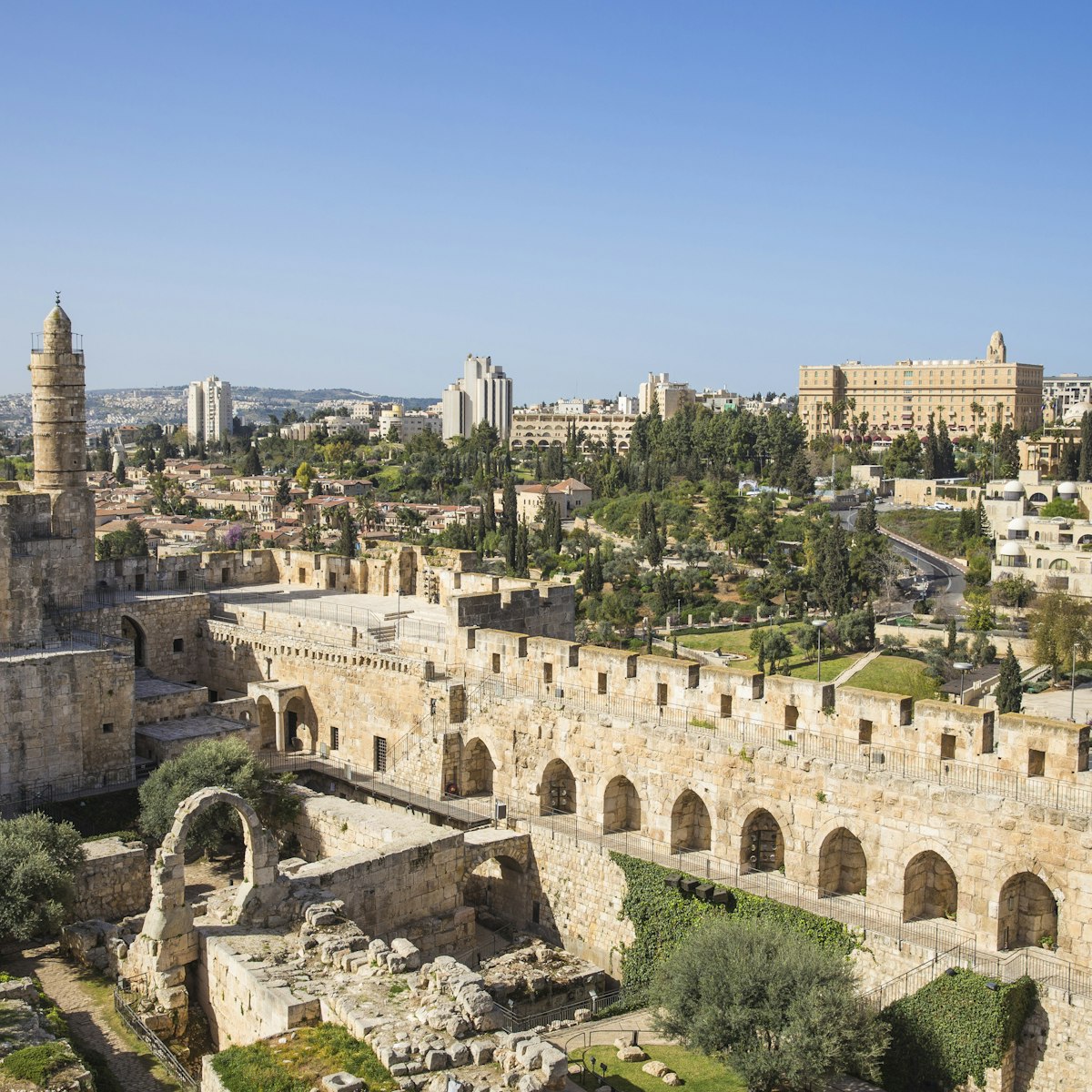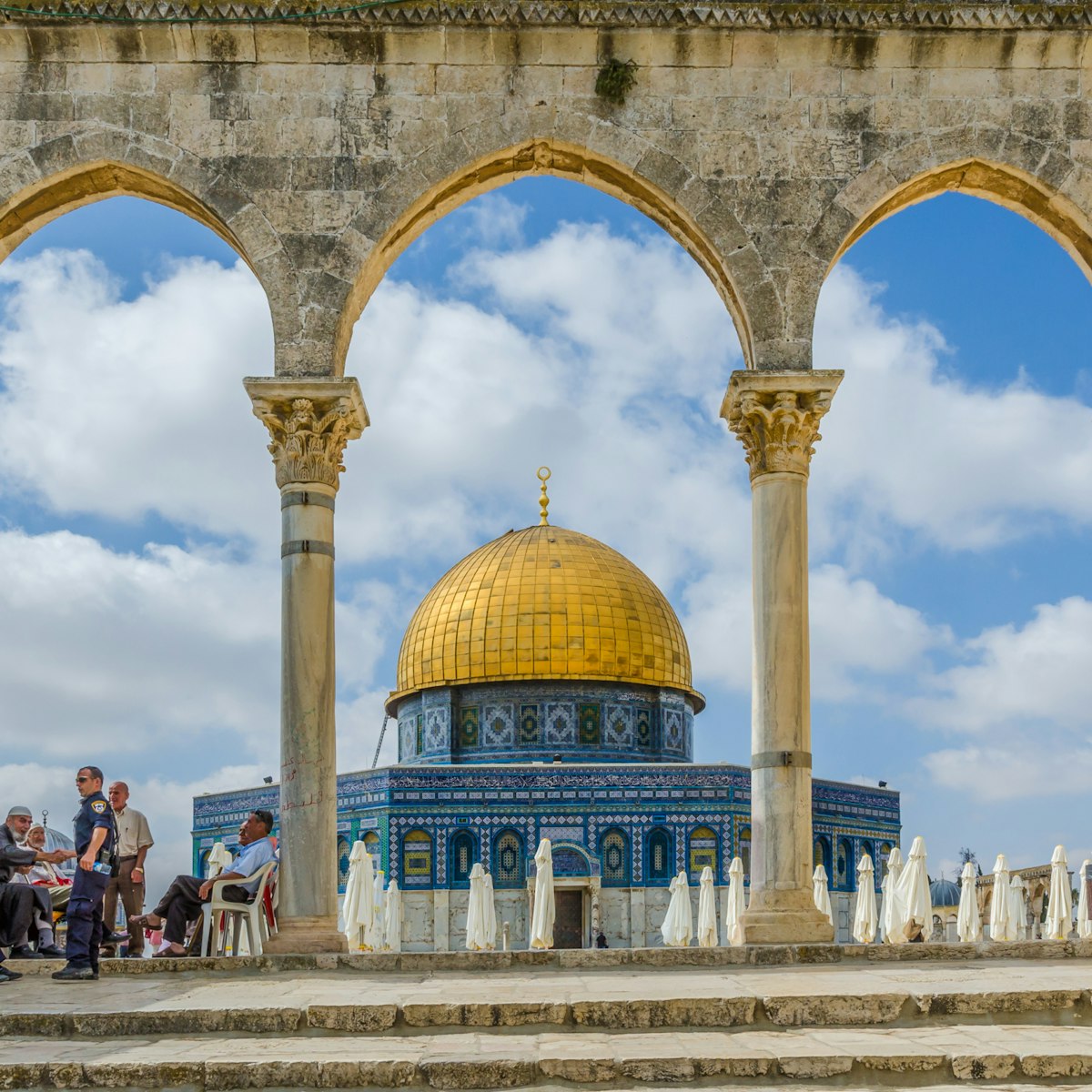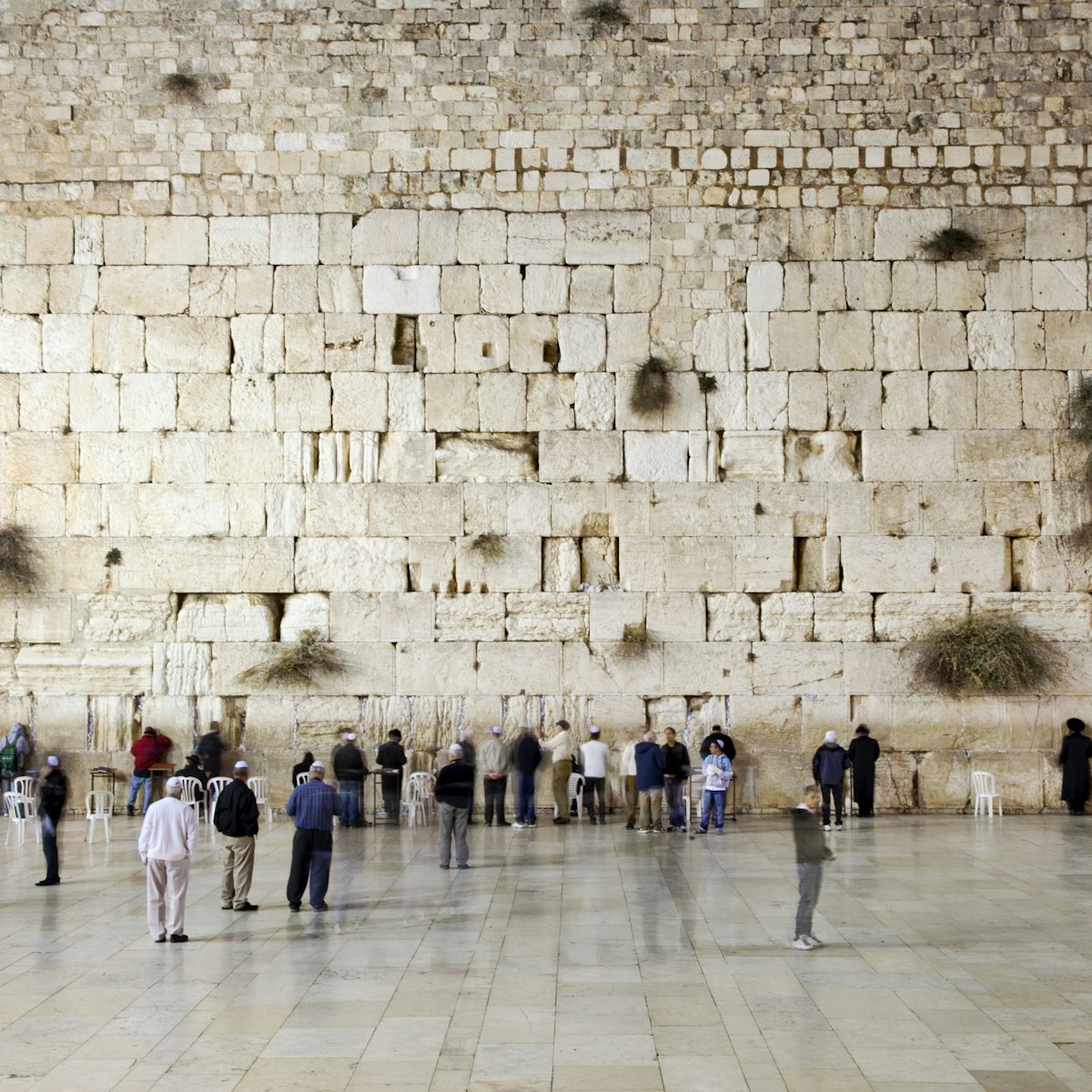Four magnificent arches, their lintels richly decorated with Crusader crosses, herald the entrance to one of Christianity's most sacred sites. The church is believed by many Christians to be built over the biblical Calvary, or Golgotha, where Jesus was nailed to the cross, died and rose from the dead. For the past 16 centuries, pilgrims have travelled far to worship here; expect crowds rather than quiet contemplation, unless you arrive early. The easiest access is via Christian Quarter Rd.
Tightly enclosed within a courtyard at the edge of the Christian and Muslim Quarters, the church appears to rise out of nowhere. It is perennially packed with tourists and pilgrims, largely because it incorporates the final five Stations of the Cross (stops 10 to 14 of the Via Dolorosa).
The 10th Station of the Cross is in a small chapel reached by stairs to the right of the church entrance; it is believed that Jesus was stripped of his garments here. Behind the wall of the 10th Station is the 11th Station, where Jesus is believed to have been nailed to the cross. The site of his death, the Rock of Calvary, is the 12th Station; an altar has been built with a hole allowing pilgrims to touch the rock. Between the two is the 13th Station, where Jesus's body is said to have been taken down. Back down the stairs, it's impossible to miss the rotunda housing the the 14th Station, the Tomb of the Holy Sepulchre.
The decision to erect a church here is said to have been the result of lobbying on the part of Helena, the mother of Emperor Constantine, 300 years after the crucifixion. While on pilgrimage in the Holy City, she took note of Hadrian’s pagan temple and shrine to Venus (built in 135 CE), and believed it had been placed here to thwart early Christians who had worshipped at the site. She joined the Bishop of Jerusalem, Macarius, in petitioning the emperor to demolish the temple, excavate the tomb of Christ and build a church to house the tomb.
Excavations revealed three crosses, leading Helena to declare the site as Calvary. Work on Constantine’s church commenced in 326 CE, and it was dedicated nine years later. If you are a little confused as to why Jesus is said to have been crucified in the middle of the city, bear in mind that 2000 years ago this was an empty plot of land outside the former city walls. From the 4th century, shrines and churches were built, occasionally destroyed by invading armies and rebuilt on the site.
When his armies took the city in 638 CE, Caliph Omar was invited to pray in the church, but he refused, generously noting that if he did, his fellow Muslims would turn it into a mosque. The church was later destroyed by the mad Caliph Hakim in 1009.
Restoration began in 1010 but proceeded slowly because of a lack of funds. Eventually, the Byzantine Imperial Treasury provided a subsidy 20-odd years later. It wasn’t enough to pay for a complete reconstruction of the original church, so a large part of the building was abandoned, but an upper gallery was introduced into the rotunda and an apse added to its eastern side as a sort of compensation. This was the church that the Crusaders entered on 15 July 1099 as the new rulers of the city. They made significant alterations, and so the church as it exists today is more or less a Crusader structure of Byzantine origins. At that time, the main entrance had two access points: the current entry door and another at the head of the Crusader-era staircase on the exterior, which led into a small chapel built to provide a ceremonial entrance to the site of Calvary. This chapel was walled up after the Crusaders' defeat in 1187; its carved lintel is now exhibited in the Rockefeller Museum.
A fire in 1808 and an earthquake in 1927 caused extensive damage, and serial disagreements between the Christian factions who share ownership (Catholic, Greek Orthodox, Armenian Orthodox, Syrian, Coptic and Ethiopian) meant that it took until 1959 for a major repair program to be agreed upon. It also took decades to agree on the most recent renovations in 2016, when the tomb enjoyed a US$4 million injection of funding to stabilise the shrine. To avoid clashes over control of the church, the keys to it have been in the possession of the Nusseibehs, thought to be the oldest Muslim family in Jerusalem, since the days of Saladin, and it’s still their job to unlock the doors each morning and secure them again at night.
The church has always been home to relics, many of which have been coveted by pilgrims. The cross discovered by Helena was originally put on display, but it was hidden away when the temptation to take a piece as a memento (or even bite one off) became too strong for certain ardent pilgrims to resist. These days, pilgrims limit themselves to pouring oil on the Stone of Unction and then rubbing it off on a handkerchief to take home as a relic.
Visitors here should dress modestly – the guards can be strict and refuse entry to those with bare legs, shoulders or backs. The main entrance is via Christian Quarter Rd, but there are also entry points via Dabbaga Rd (accessed from Souq Khan Al Zeit St or Mauristan Rd) or via the rooftop Ethiopian Monastery.








